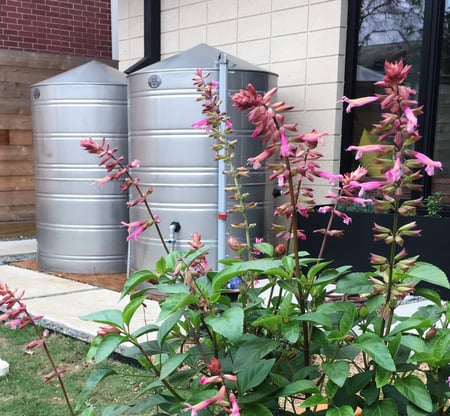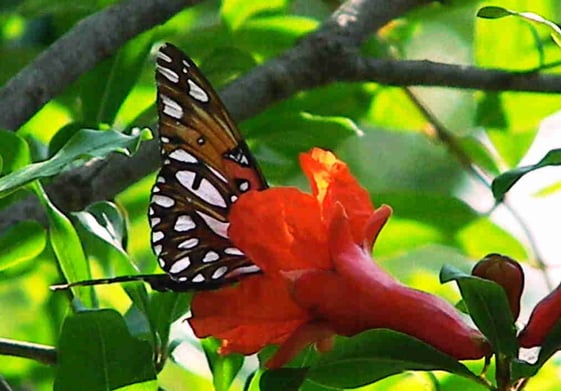Catch the rain - save it for a sunny day!
Why Collect Rainwater?
Every gardener will tell you that rain is the best water for plants. Even in areas where it rains a lot, there will be periods when no rainfall takes place. Storing rainwater ensures that you have the perfect water for your garden or plants whenever you need it. And a stainless steel rain tank can be a great backup water source in case of emergency.
How big of a tank do I need?
Many people are surprised with how much water they can collect from their roofs, and how much water the garden will use! We can help you size your tank. Let us know the size of your roof and your garden, and whether you want to use the collected water for any other purpose beyond irrigation.
A properly sized system will put you on the way toward a terrific garden, and give you peace of mind through drought, crisis or disaster.
Did you know that a 1,000 square foot roof can capture over 600 gallons of water in a 1” rain?
What about system maintenance?
A properly designed rainwater system needs very little maintenance. Prefiltering rain water as it comes off the roof with the devices we supply minimizes or eliminates the need to clean out the tank, and works best when the screened filter is cleaned periodically. We have seen tanks with minimal prefiltration that have very little debris in the bottom even after 15 years of service. But if something gets into the tank, it's an easy matter to remove the lid for cleaning.
Avoid using chlorine in a rainwater system, as it can negatively affect a stainless steel tank (not to mention being hazardous to plant life). Chlorinated tap water is fine, just don't put concentrated chlorine in the tank to disinfect, or use bleach cleaners on the outside of your stainless steel tank.
Will the tank survive a freeze?
If you are in an area with cold winters and the tank is out in the elements, consider draining your rainwater tank during the coldest part of the year. All components of our tanks are rated to withstand -40 degrees F, so they will be fine as long as the tank is empty. Tanks in southern regions are fine for brief cold snaps, depending on the size of your tank and the duration of the freeze.
Can I integrate rainwater into an irrigation system?
Absolutely! Rainwater is the best for plants, and we can help you set up your rain collection system whether you will water by hand or have a fully automated system.






Rainwater is the best for your plants!
Why is rainwater so much better?
Have you ever noticed how much healthier your garden looks after a good rain? There are several reasons for that, from what is not in rainwater (chemicals) to what is in there (nutrients).
Best for the soil:
Chlorine used in tap water kills bacteria, but this can also harm your growing things. Plants develop through beneficial relationships with bacteria and other organisms in the soil, which are damaged by chlorine in tap water. This is one of the reasons you see your plants do so much better after a good soaking from the rain.
The right pH:
Plants prefer water that is slightly acidic, pH from about 5.5 to 6.5, and that is what you get from your rainwater collection system. By contrast, tap water is treated to be alkaline in order to prevent pipe corrosion, which makes it more difficult for plants to uptake nutrients from the soil.
Salt Free:
Unlike well water and some tap water, rainwater does not contain mineral salts that can bind up nutrients and cause growing problems with your plants. These salts can also build up over time, especially in container plants.
And it’s not just what is not there – the dissolved organic matter and nitrogen in your rain tank are just what the plants are looking for. Watering your garden with harvested rain adds micro- and macro-nutrients your plants really need to green up and thrive.
Help the beneficial insects too!
Bees and butterflies need water too, and just imagine how much they would prefer pure rain water! Try using rainwater for a pollinator watering station.




